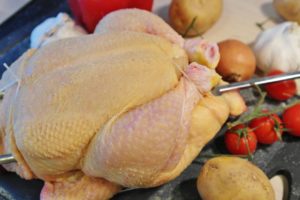The summer months are winding down and I don’t know about you but we have hosted and been to a numerous amount of cook outs, BBQs, pot lucks, and don’t forget all those June weddings! There have been countless of dishes served, countless of dishes consumed. And now, as if I need any other reasons to stand in more buffet lines, brace yourselves…. because we roll right into tailgate parties and the holidays. My favorite time of the year!
I was just in Hobby Lobby the other day (my home away from home) and I noticed that not only did they already have out Fall decorations, but Christmas as well!
Along with the hearts of thanksgiving and sleigh bells ringing there is something that draws you to the table that is WAY more engaging than any centerpiece….Yes you guessed it FOOD! I honestly don’t know about any where else but here in the SOUTH there isn’t an occasion where a good table spread is not expected! Think about it; from the time that we are in the womb until the day we go in the ground, food will be served. So with that being said, Let’s get right to it! It’s time for….. FOOD SAFETY 201! Let the good times and good food roll!
Hopefully you read my previous post Food safety 101- Supermarket Sweep, where you can find food safety tips while grocery shopping and you can become familiar with some of the food safety terminology.


1. FFO- Food, Fridge, and Organization
How you store and organize your perishable foods, play a big part in reducing the changes of contracting a food borne illness. Remember it is essential to keep foods out of the Danger Temperature Zone. Always store your meat items in a sealed and leak-proof container on the bottom shelf. This ensures that meat juices will not cross-contaminate other food items. I also label and date each container so that I never have to wonder….what day was it again when I bought that chicken? Don’t store perishable foods in the door such as eggs; they should be stored in the carton on a shelf.
Food Fact: The temperature of the storage bins in the door fluctuate more than the temperature in the cabinets.
2. Know Your Dates
Many food products are labeled with a date, but because there are so many versions it can easily become misleading. “Sell by,” “expiration,” “use by,” “best by” or “packed on” date. WHEW!!! That’s a lot of dates, but it is important to understand the difference of these terms so that food is properly stored, used, and disposed of when necessary.
- Sell by dates note the last date by which a product should be sold from the retailer. These dates allow consumers a period of a few days past the designated date to use the product.
- Expiration dates note the last day that a food product should be consumed or used for cooking.
- “Use by” or “best by” dates are a sort of quality assurance, in that these dates note the date on which the product may start loosing its freshness, but will not make you ill
- Packed on dates note the day on which a food was canned, packaged, and/or processed
3. The Thaw Law
Food should NEVER be thawed on a kitchen counter. Doing so allows the food to sit in the “Danger Temperature Zone”, putting the item at risk for bacterial growth and foodborne pathogens. Rather, food should be thawed in the refrigerator, at a temperature no greater than 41°F.
Food may also be thawed by placing it in an airtight, water-tight plastic bag, and submerged in cold water. The water should remain running or should, at least, be changed every 20 minutes. In some cases, food may be thawed in the oven during cooking. Finally, food may be thawed completely in a microwave, but must be cooked immediately.
Food Fact: Generally, frozen foods will take at least 1.5 times as long as those already thawed to cook.
4. Let’s Get Cooking: Proper Cooking Temp
You can not taste see, taste, or smell harmful bacteria, this is why it is so important for you to know the proper cooking/heating point, that kills bacteria for each food item.
135° — Cooked fruits, vegetables, and any commercially processed food that will be held for an extended period before being consumed
145° — Roasts, steaks, chops, fish, eggs
155° — Ground meats or fish, injected meats, eggs that will not be immediately consumed
165° — Poultry, stuffing, stuffed items (including meats, fish, pasta, and poultry)
5. What to Do with All Those Left-Overs?
Left-overs are literally my favorite. They taste even better because the combination of flavors have really had time to come together. Although left-overs are GREAT, they must be handled properly.
- Discard food that has been at room temperature for more than two hours.
- Refrigerate leftovers immediately (or once cooled by quick-chilling/dividing into smaller containers)
- Reheat leftovers to at least 165°F before serving
- Do not reheat leftovers more than once. Discard remaining leftovers after first reheating. If leftovers have been frozen, thaw in the refrigerator or while cooking
- Do not keep leftovers for more than 7 days, if stored in a refrigerator

The art of practicing food safety may seem hard, but it quickly becomes habits that you don’t even have to think about, and if you forget, don’t panic! There are now some amazing apps such as Food Safe that are only a touch away.











